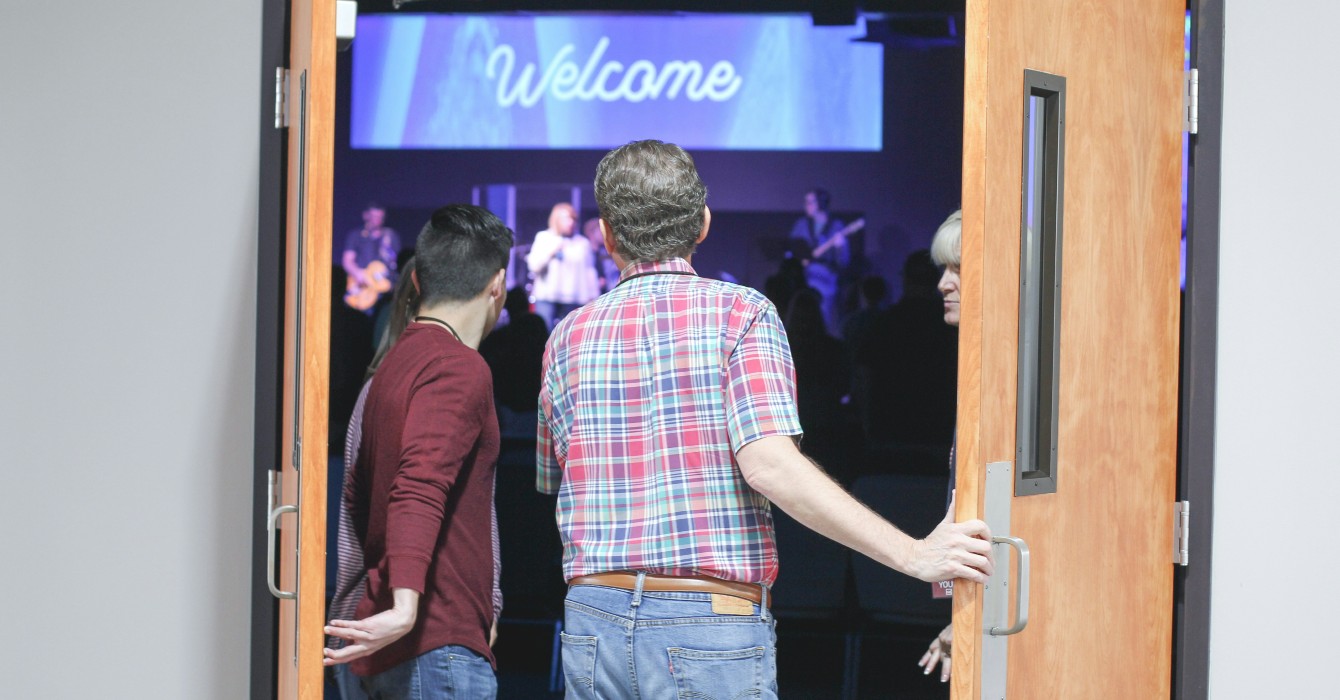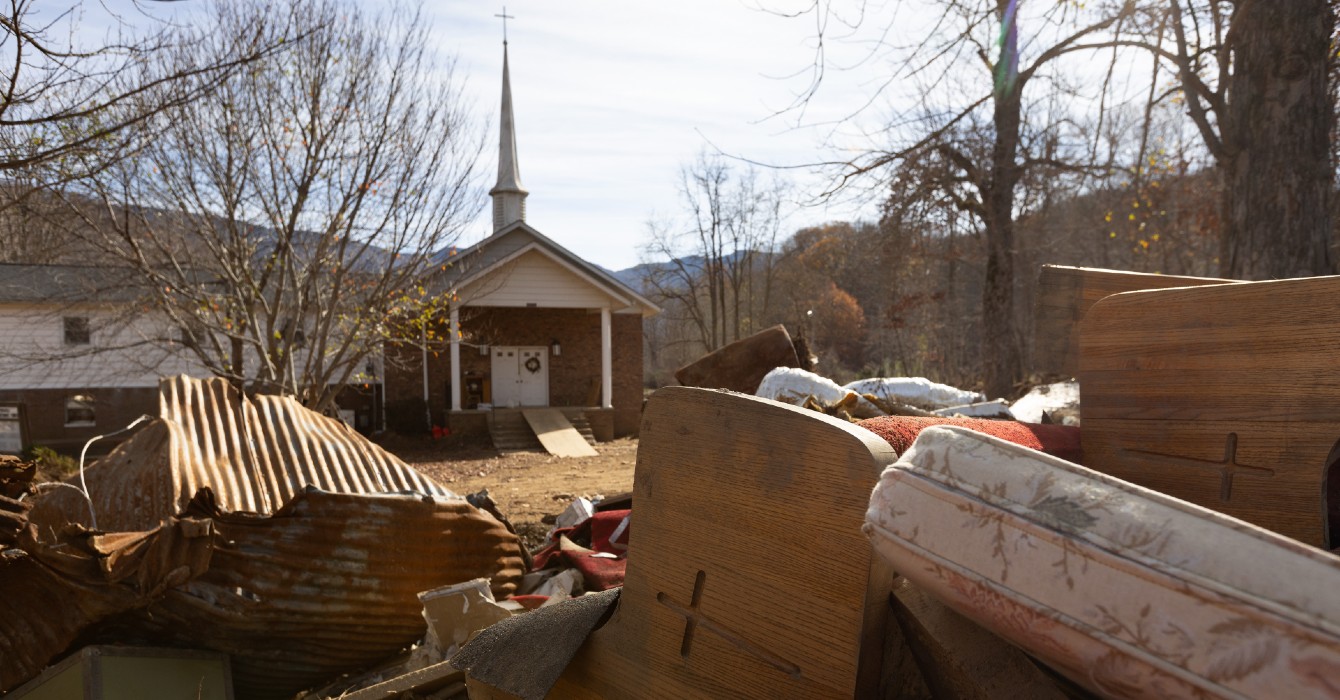The first time the Rev. Kelly Chatman stepped into the pulpit at Redeemer Lutheran Church 17 years ago, he looked out at his new congregation -- 30, maybe 35 people at the most -- and got a sinking feeling in his stomach.
“I wondered if I had made a mistake,” he said recently.
After 25 years spent mostly in education and church administration, Chatman had decided to try his hand at being a local church pastor. He had walked away from a prestigious and comfortable position as the director of youth ministries in the Evangelical Lutheran Church in America’s Chicago headquarters to take over a struggling church in a distressed neighborhood in Minneapolis.
Many years earlier, he had served briefly as an associate pastor in Oregon, but this time he was heading his own church. And it was not an auspicious beginning. On his way into the building that morning, he couldn’t pretend that he hadn’t seen the drug dealers doing business on the corner across the street.
“I said to myself, ‘What am I doing here at this stage of my career?’” he said. “I wasn’t even sure how long they would be able to keep paying my salary.”
Soon, Chatman changed his perspective.
“I decided that the congregation wasn’t the 35 people sitting in the pews,” he said. “The congregation was the 4,000 people who lived in the neighborhood. Once I reframed it like that, it helped me see that the church needed to be a physical presence on the street.”

Who is “the congregation” at your church? Can a congregation include those outside the church’s walls?
And what a presence it has become. Redeemer, through its nonprofit community development organization, Redeemer Center for Life, literally owns, if not the street, the entire block the church sits on -- and more. More importantly, it has had an extraordinary impact on the lives of people in the Harrison neighborhood of North Minneapolis, a racially diverse, mostly low-income area near the city’s downtown.
‘A beacon of hope’
“We have been able to change the narrative about North Minneapolis within the church, the neighborhood and the larger community,” Chatman said. As the church’s website declares, Redeemer is “a beacon of hope in the Harrison neighborhood of North Minneapolis.”
What is your church’s presence in the neighborhood? For whom is it a beacon of hope?
Over the years, Redeemer and the Redeemer Center for Life have launched a cafe, a bike repair and coffee shop, a 16-unit apartment building, another seven apartments over the cafe, a home that houses Lutheran Volunteer Corps members, and a storefront that has been converted into the Living Room, a gathering space for everything from health clinics to civic meetings. The church also has built two single-family homes that were sold as part of an effort to support affordable housing.
“Between Redeemer Church and Redeemer Center for Life, we’re responsible for more than $1 million in economic activity in this neighborhood annually,” he said.
As for the church itself, worship is livelier and more crowded than it was on Chatman’s first Sunday, but the neighborhood continues to be Redeemer’s primary focus. About 90 people now attend Sunday services, and 250 are listed on the church’s membership rolls, but Chatman still insists that the congregation is more than just the Sunday faithful.
“There are people in this neighborhood who call this their church who have never been inside the building,” he said.
What does it mean to be church for those who don’t attend worship?
Some of those neighborhood residents have plots in the church’s community garden, where they grow produce, helping keep the area from becoming a “food desert,” lacking affordable nutritious food. Some come to the biweekly cookouts around the church’s outdoor pizza oven, where volunteers bake pizza and breads (all ingredients provided) for visitors. And some -- more than 800 this year -- come for the church’s annual block party.

And as for the drug dealers, Chatman years ago invited them to the cookouts, too. But they declined and decided to relocate outside the church’s sphere of influence.
Redeemer may not at first glance look like the model of a thriving congregation. It has an older, traditional sanctuary, with services that follow a standard Lutheran liturgy. And Chatman is far from a fiery, arm-waving, spell-binding orator. On the contrary, when he preaches, he stands between the two front pews, delivering his sermon in a casual fashion that is closer to a chat than a formal address.
What does a "successful" church look like?
“I was taught to preach in a pulpit reading from a manuscript,” he said. But he noticed when preaching at Redeemer that every time he looked up, he got little if any eye contact from the congregation. So he moved out of the pulpit and started memorizing his message -- or most of it, anyway. “Every week I forget something,” he said.

More than Sunday morning
Mention the church’s growth to Chatman or the members, and they shrug it off. Redeemer Lutheran is not the kind of church that holds meetings to dream up ways to increase Sunday morning attendance. They use their meetings to discuss ways to better serve their neighbors.
“The service is nice,” David Merchant, a 10-year member, said as people filed out of the sanctuary on a September Sunday. “But the story here is not what happens on Sundays. The story is what happens in this building the other six days of the week.”

Chatman is happy to lead tours of the church campus -- one entire square block plus properties on two adjoining blocks -- but he makes it clear that his pride is shared by many.
“I’m just a piece of the puzzle,” he said. “This is much bigger than me.”
The Redeemer Center for Life acquired its first property not long before Chatman arrived in 2001. It was a new building to house Milda’s Cafe, a small but very important eatery across the street, a neighborhood fixture since 1965.
“The building housing Milda’s was sold in the mid-’90s, and Milda was going to close it,” said T. Williams, a member since 1991. “That was sad news. It was a community gathering spot; it was one of the few places in the neighborhood to eat. So we started a campaign to keep it open.”
The church didn’t have any money, but it did have a parking lot where they could put a new building to house the cafe. They found a suburban Lutheran church that was willing to partner with them. Redeemer provided the land, the suburban church provided the money, and a new Milda’s took root.
What non-monetary resources does your church have that can be leveraged for the benefit of the surrounding community?
“We are risk takers,” Williams said, “and I mean that in a healthy kind of way.”
Things kicked into high gear with Chatman’s arrival. “He’s an entrepreneur,” Williams said. “He sees potential.”
He’s also very good at negotiating partnerships. Both the church and the Center for Life boast diverse lists of partners, from other churches to health service providers to housing coalitions.
“We may not be rich in money, but we’re rich in commitment and values,” Williams said.
A relevance that draws new people
The focus on service to people in the neighborhood has given Redeemer a relevance that many young people are seeking and has helped draw new people to the church. While the congregation does have its share of older members, it also has many young families. At a recent Sunday service, so many kids came forward for the children’s message that they were jockeying for places to sit.

“It’s genuine, and it’s meaningful,” Merchant said. “In a nutshell, there are people here who are committed to living out the gospel and the radical and sometimes very difficult Christian message of love and reconciliation and serving the poor. In my view, it’s what we are called to do and be as Christians.”
The congregation is diverse. Part of that is simply a reflection of the neighborhood, which is 39 percent African-American, 25 percent white and 16 percent Asian. But the diversity goes beyond skin color. Redeemer was one of the first churches in Minnesota to conduct gay marriage services. Worshippers range from retired executives to people who have no permanent address.
“It’s the whole rainbow of life,” Merchant said. “We have people from all walks of life, all economic levels and from all status of power. … And they all are comfortable with one another, and all are there for one another, and I think that’s really cool.”
The church places a high priority on the neighborhood’s African-American heritage. Although the attendance at Sunday morning worship services is about two-thirds white, “the people who come here during the week are 98 percent black,” Chatman said.
One of the church’s primary missions is to further racial justice, which often involves pointing out the places it doesn’t exist. Among these efforts is a 12-week series of racial discussions being held Sunday mornings this fall to “create safe space conducive to deep personal reflection and community sharing.”
Through that and other programs, the church has earned a reputation in City Hall as a voice for change. “We are a force to be reckoned with,” Chatman said.
As part of the church’s racial and social justice efforts, Chatman often finds himself working to bring people together -- a gift that he calls “doing my pastor thing.” Sometimes that’s hard. In 2015, a 24-year-old black man, Jamar Clark, was shot and killed by two Minneapolis police officers. Witnesses said he was handcuffed at the time. Protests exploded across the city, including one organized by a Black Lives Matter group based at the church.
How can your church bring people together who are divided and apart?
Later, Chatman suggested that members of the police department be invited to the next pizza oven cookout.
“The young Black Lives Matter people were totally against it,” he recalled. But he insisted, and three officers eventually showed up. “It was a little tense at first,” he said. “But then everyone relaxed.”

The church and the nonprofit
The church and Redeemer Center for Life enjoy a close relationship, with Chatman overseeing both. When the center was started in 1998, 20 percent of the board members were representatives of the church, but it had a separate executive director. When that person left in 2002, Chatman agreed to step in on an interim basis. After six years, he did manage to hand off the reins for a while, but it wasn’t long before he was back overseeing both the church and the nonprofit.
“I look at it like running a small business,” he said of the workload. “You show up in the morning as early as you need to and stay as long as it takes to get all the work done.”
In recent years, Redeemer has become concerned about the prospect of gentrification. The Harrison neighborhood abuts downtown Minneapolis, which changed dramatically after the Minnesota Twins opened a new stadium there in 2010. Since then, the area near the ballpark, once home to strip clubs and old warehouses, has evolved into one of upscale condos and tony microbreweries. The gentrification hasn’t yet reached the church (which is about a mile from the ballfield), but it’s clearly creeping in that direction.
Redeemer and the neighborhood, however, remember the area’s origins.
“There’s a map in City Hall from 1935 that describes this as a ‘Negro slum,’” Chatman said, shaking his head sadly. “Granted, that was 1935, but the fact that it exists shows what we came out of. We need to change that consciousness.”
Chatman is notably slow to anger, but it can happen. When a house across the street from the church was foreclosed on, “the lender put a piece of plywood up in front of the house and spray-painted on it, ‘For sale, call 1-800 …’
“That was an insult. They couldn’t even spare a regular ‘For Sale’ sign? And a spray-painted sign in a black neighborhood? They were just playing to the graffiti stereotype.” The Center for Life bought the residence, which it now uses to house Lutheran Volunteer Corps members.
Chatman is 67, and while his retirement is not imminent -- Minneapolis is hosting a national ELCA youth leadership conference in three years, and he wants to be involved -- he said that he probably won’t work much beyond that. Organizations that rely heavily on a visionary leader often flounder when that person steps aside, but Chatman said that won’t be a concern at Redeemer.
“Over the last 17 years, we’ve built enough of an infrastructure that that shouldn’t be a problem,” he said. “There are enough people that the work will continue.”
Questions to consider
Questions to consider
- Who is “the congregation” at your church? Can a congregation include those outside the church’s walls?
- What is your church’s presence in the neighborhood? For whom is it a beacon of hope?
- What does it mean to be church for those who don’t attend worship? Is worship attendance required to be part of church?
- How does Redeemer Lutheran challenge your understanding of what a successful church looks like?
- What non-monetary resources does your church have that can be leveraged for the benefit of the surrounding community?
- How can your church bring people together who are divided and apart?


















